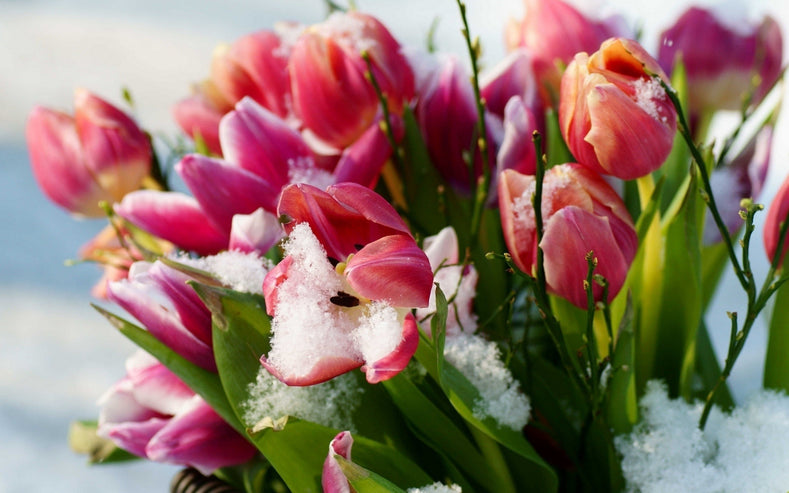Protecting Flower Bulbs That Come Up Too Early
Surprise!
When we say we love surprises, what we really mean is that we love small fun things that break the monotony of our daily lives. An unexpected message from a beloved friend, an exciting package in the mail…These things that add a bit of color to an otherwise drab day.
Calming Routine
But apart from those joyous little moments, what we actually really love is routine & predictability: The sun goes up in the morning and sets at night, after every Monday there’s always a Tuesday and dessert should be eaten after dinner, not before. Patterns help us to feel safe, they are things we can rely on amidst the chaos that is life. Not only do they tell us what will happen and when, but they also help us to make decisions about the best times to do certain things.
Nature’s Rhythm
For as long as people have been growing food, and before that in our in our hunting and gathering days, we have let the patterns of the seasons guide our actions. When to reap and when to sow, when to hunt and when to rest. And plants themselves also follow their own pattern of growing, blooming and withering.
Flower bulbs are a prime example of plants with a very predictable and visible rhythm: They will bloom from early spring to early summer, they hibernate underground during the winter, and the best time to plant them is in the fall. Reliable, ‘like clockwork’.
Coming Up Too Early?
But the weather, that great conductor of the orchestra of your garden, isn’t the same as it used to be. The predictable pattern of your crocuses and snowdrops coming up in late winter or early spring after a succession of long cold winter months, is starting to shift, and with it the behavior of the bulbs you so diligently planted last fall. Instead of being fashionably late, some flower bulbs are rearing their tiny heads disturbingly early, breaking their predictable pattern, and leading many gardeners to worry.
Protecting Early Risers
But there’s no need to fear. Yes, flower bulbs do really like the freezing winters of yore, with their slow drop in temperature followed by a long period of steady cold and a slow rise in temperature once spring is on its way. In comparison, today’s winters seem erratic, cold one week, warm the next, all predictability seems to have gone out of the window. But rest assured, flower bulbs are quite hardy as well as adaptable, and are built to withstand the weather’s ‘mood swings’.
Underground Activity
From the moment you plant your flower bulbs in fall, they start growing, just not where you can see them. They develop a deep and extensive root system and even form some sprouts, which can rise to the surface when the weather goes through a warm spell. That’s when you will see a few inches of green coming up in your lawn or flower beds.
The Magic of Mulch
Very low temperatures and harsh, dry winds may damage these first leaves, causing their tips to turn brown. But as long as the buds of the flowers remain underground, your spring blooms won’t be affected. If the buds do try to worm their way up as well, you can add a layer of mulch to protect them from the elements.
If the weather in your area is prone to a bit of yo-yo-ing, you might even consider putting mulch over your flower bulbs in late fall already, after the ground has started to freeze. Covering the soil with 2-3 inches of wood chips, bark, straw, pine needles or fallen leaves will protect early shoots from extreme cold and keep the soil temperature constant, so your spring display will be just as lush as it has always been!
